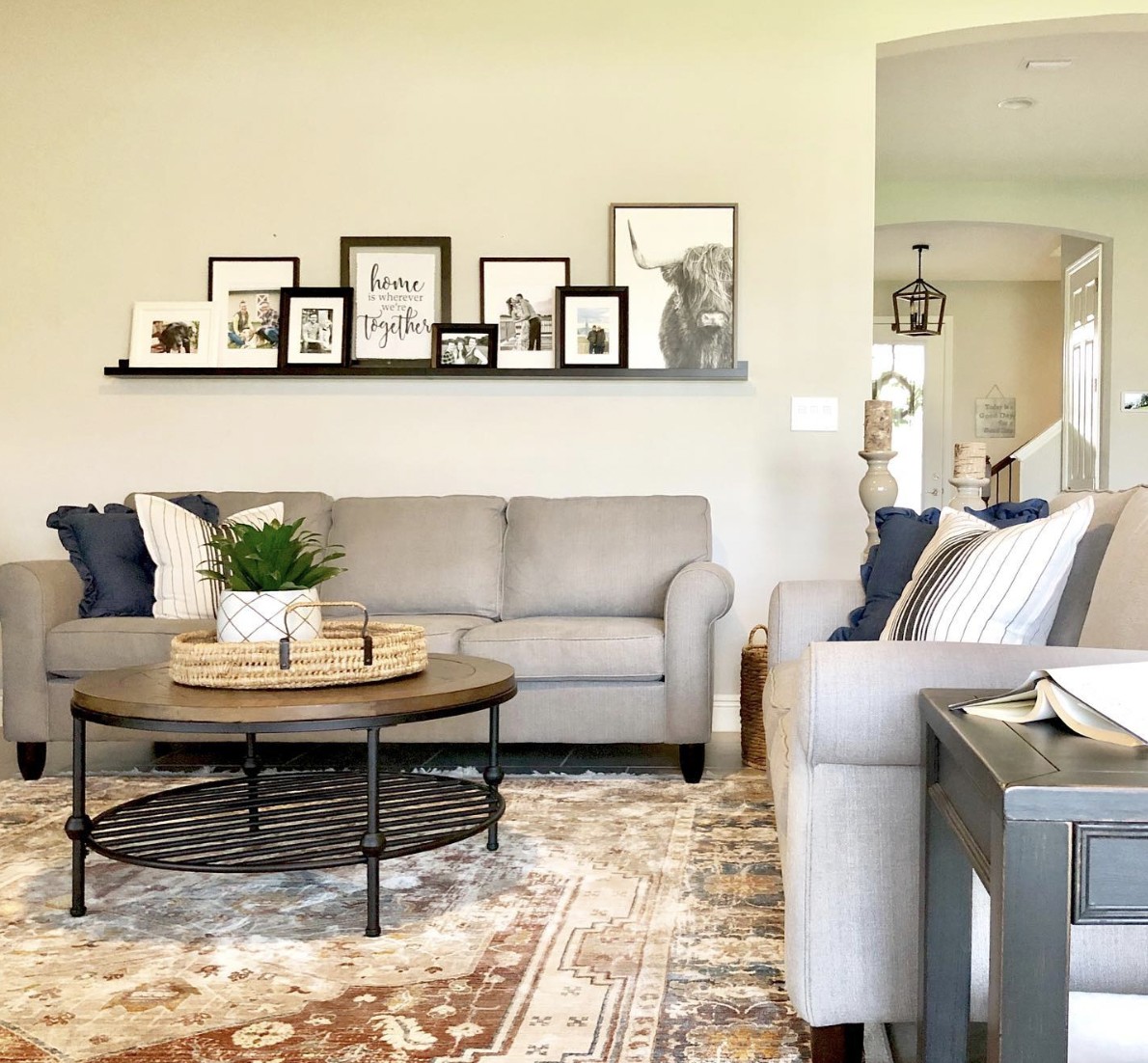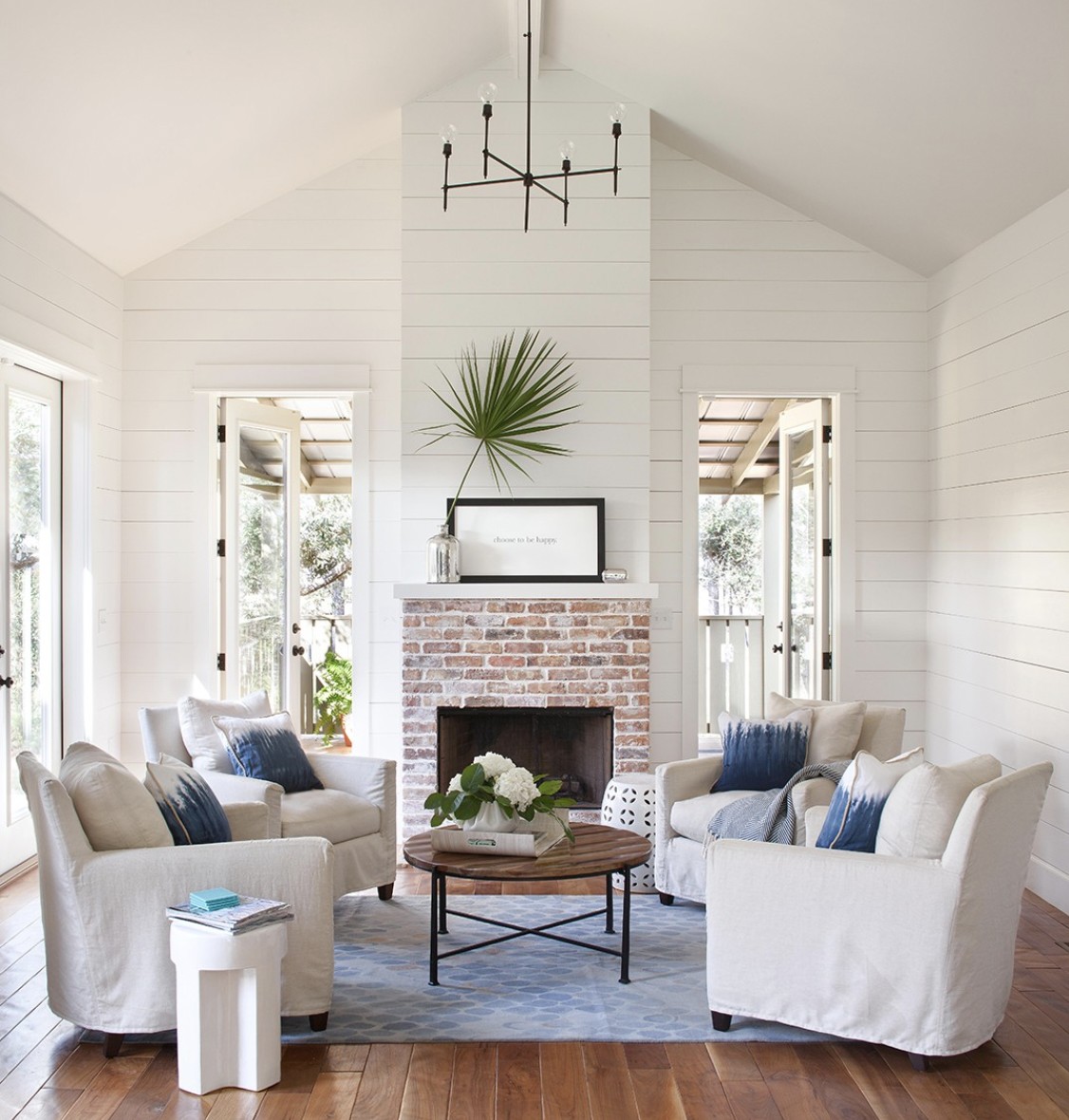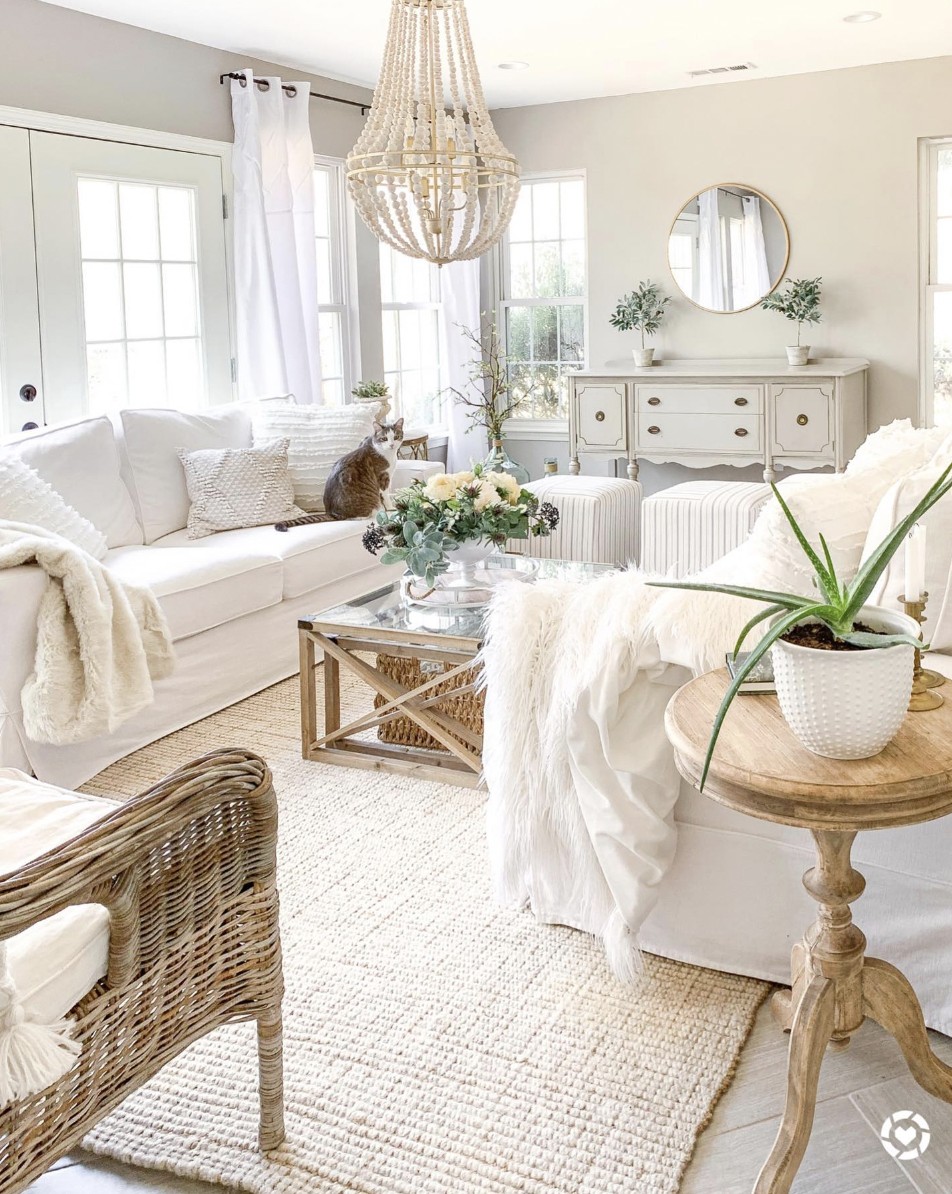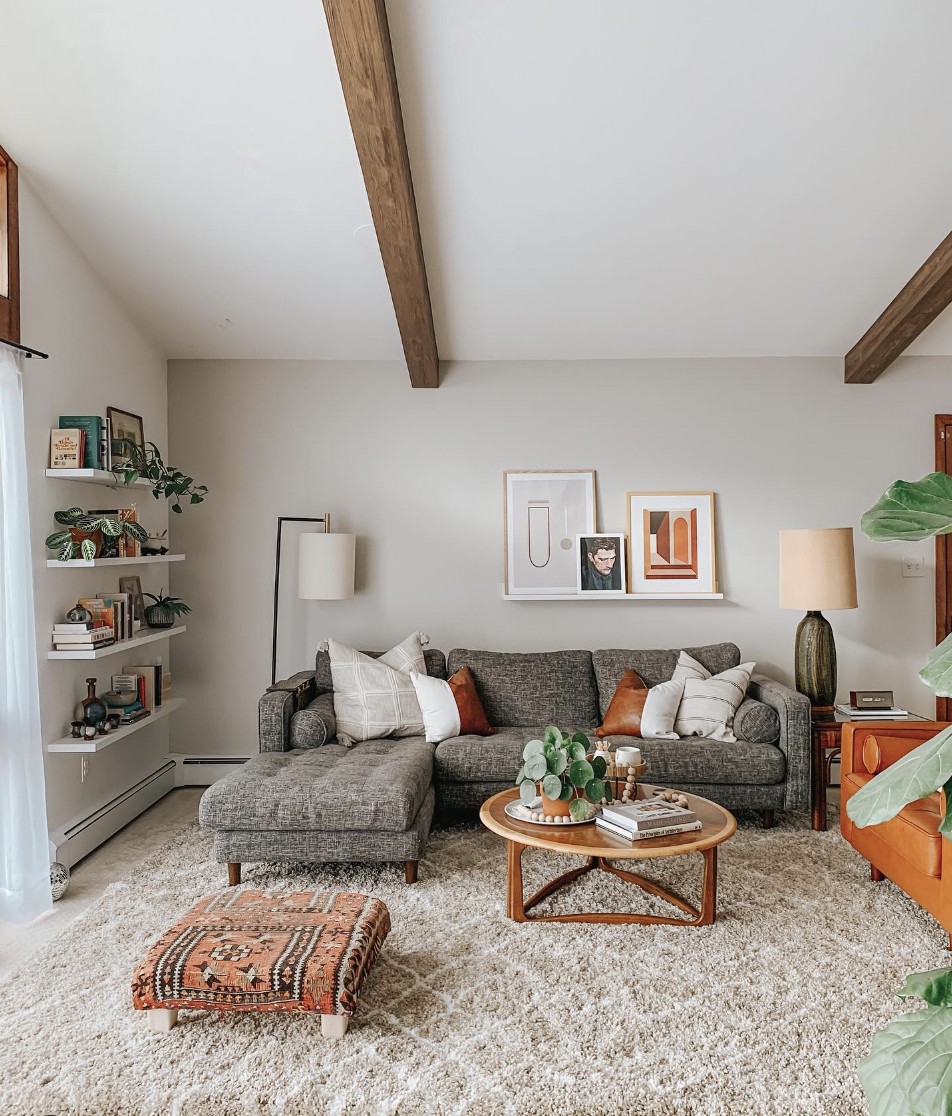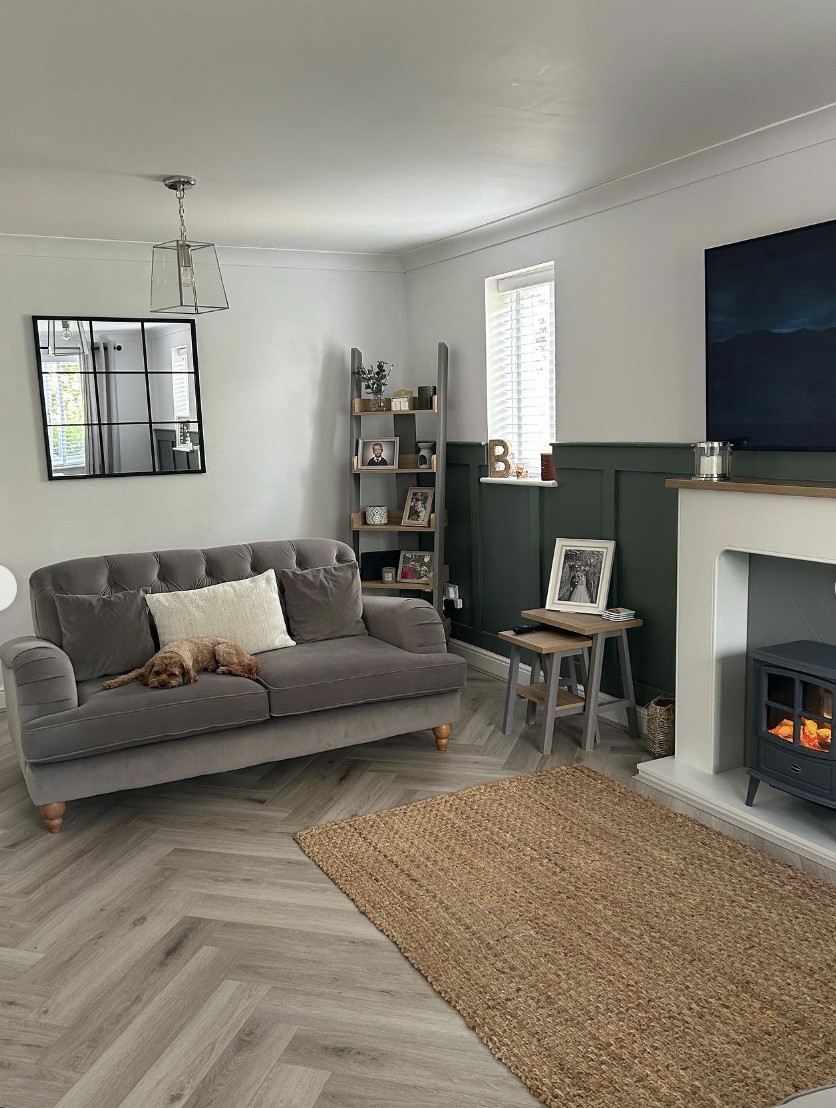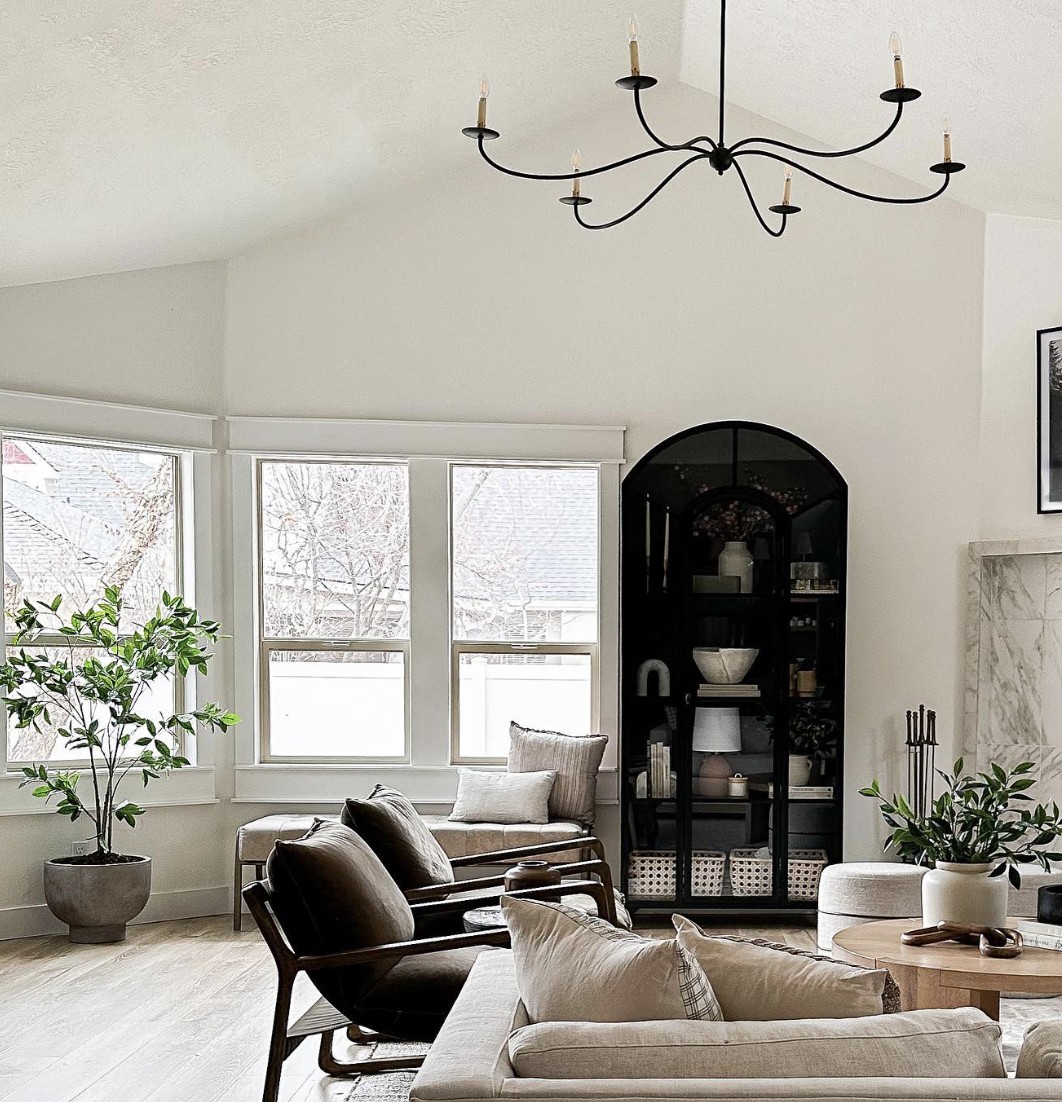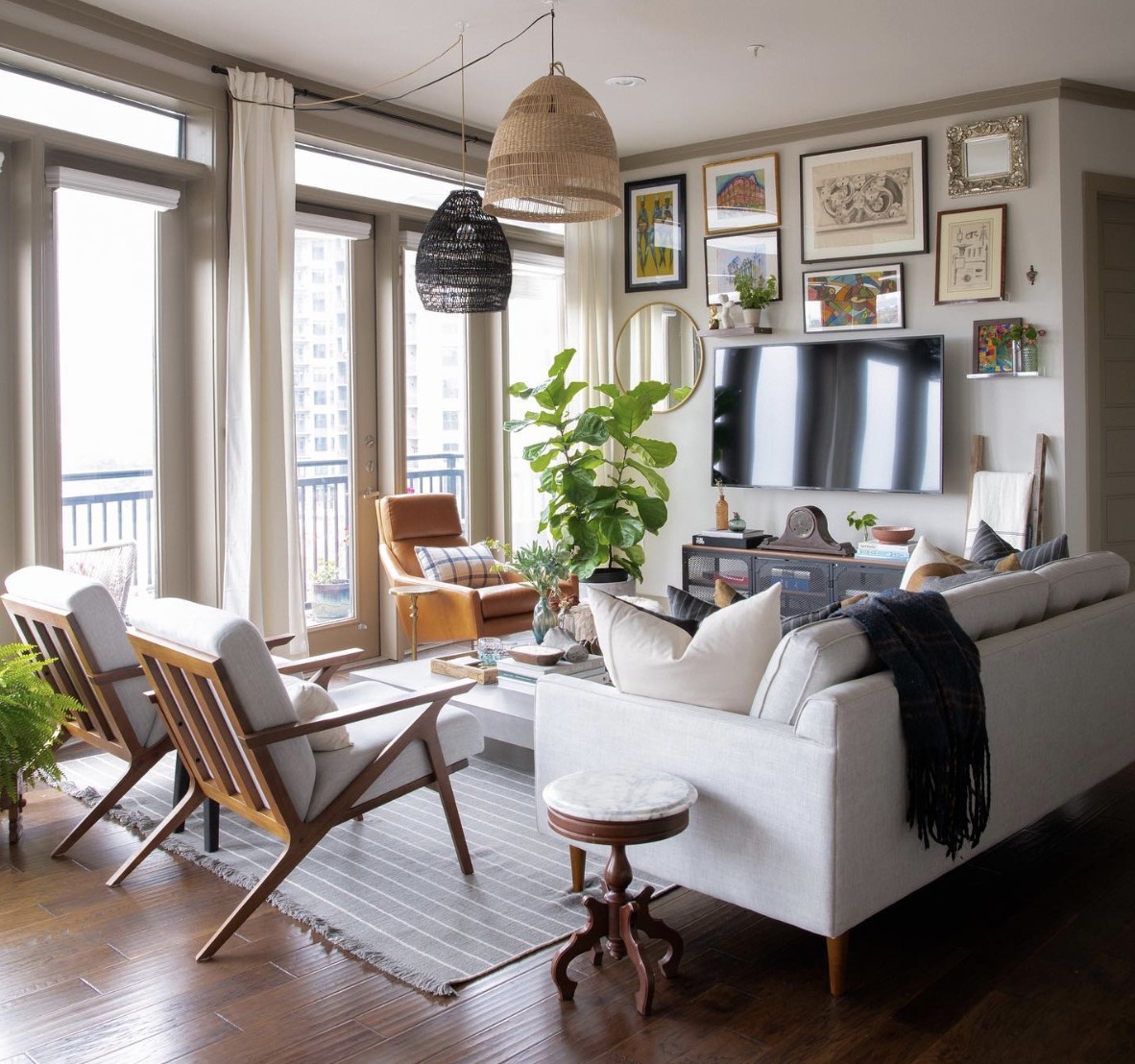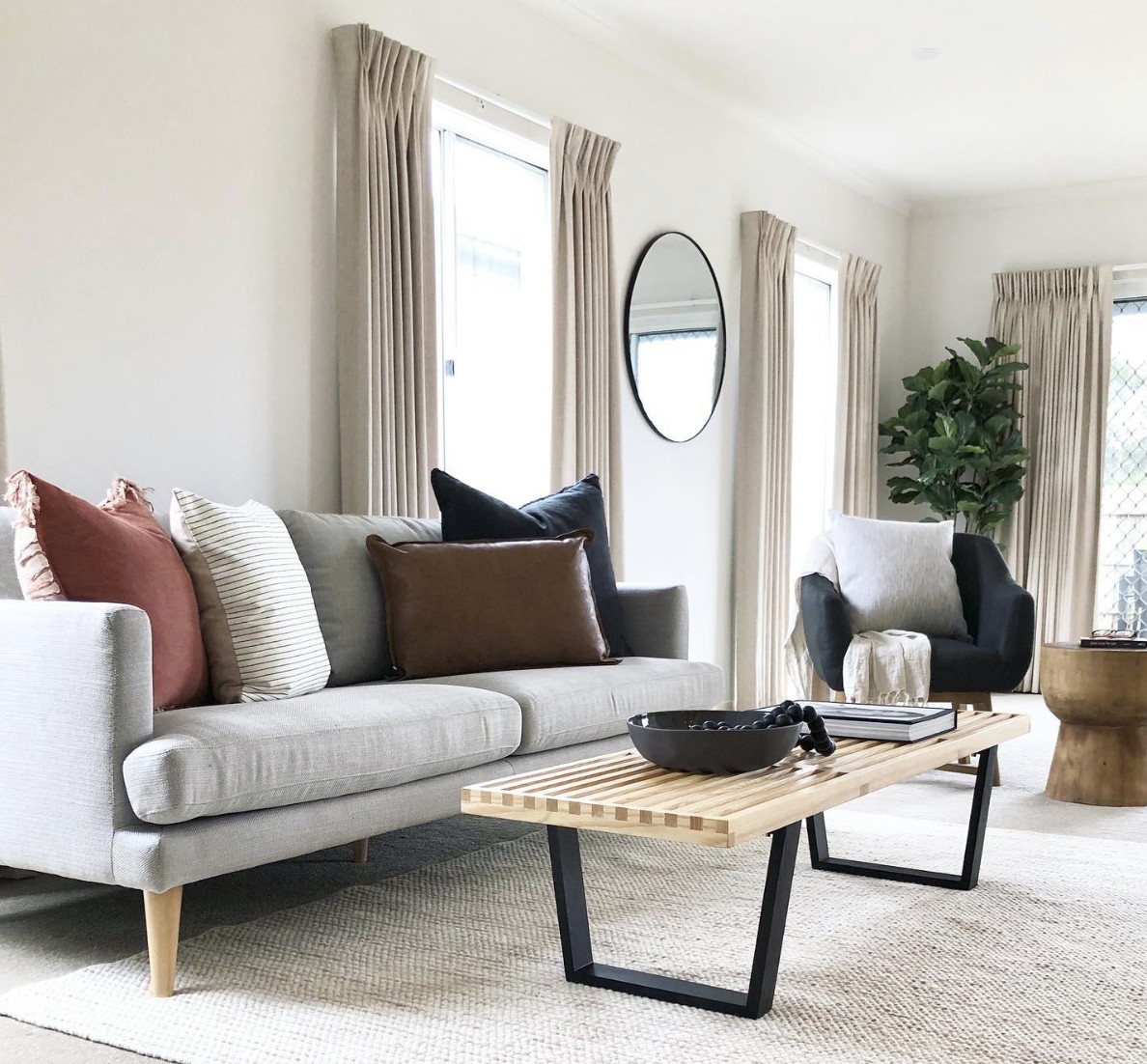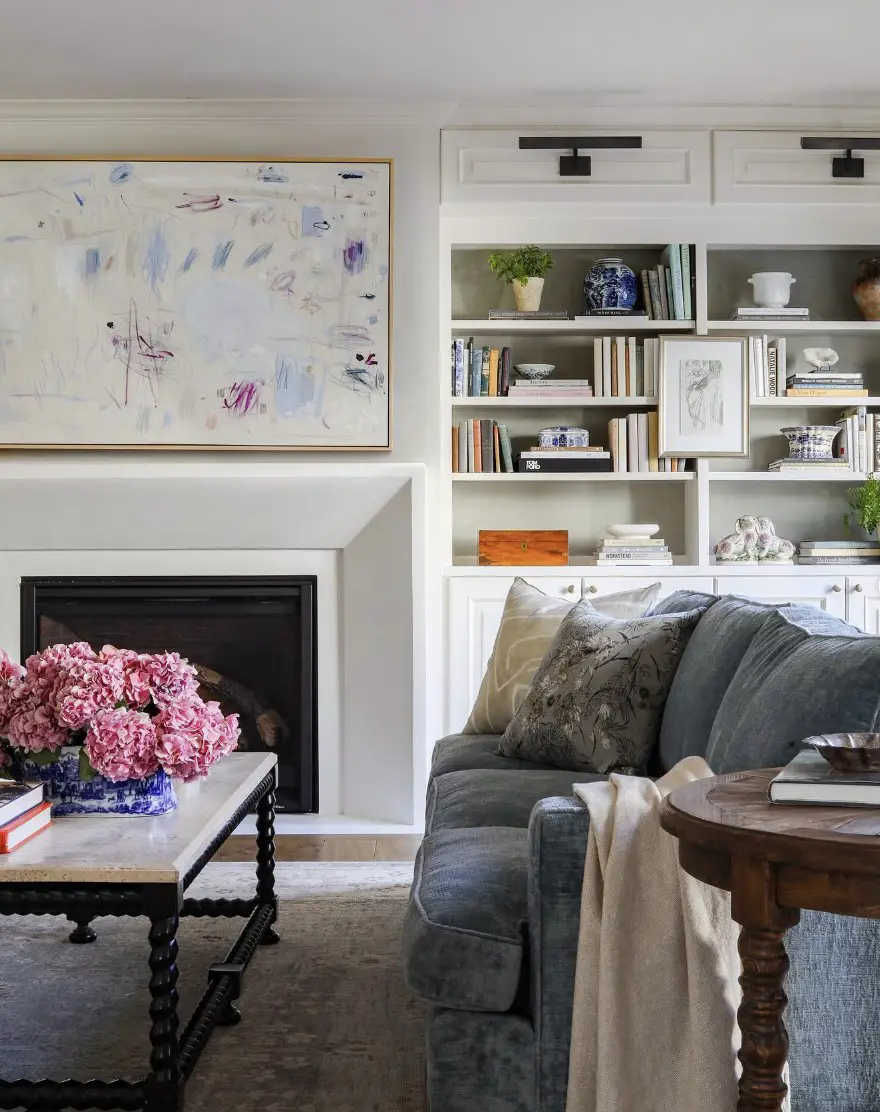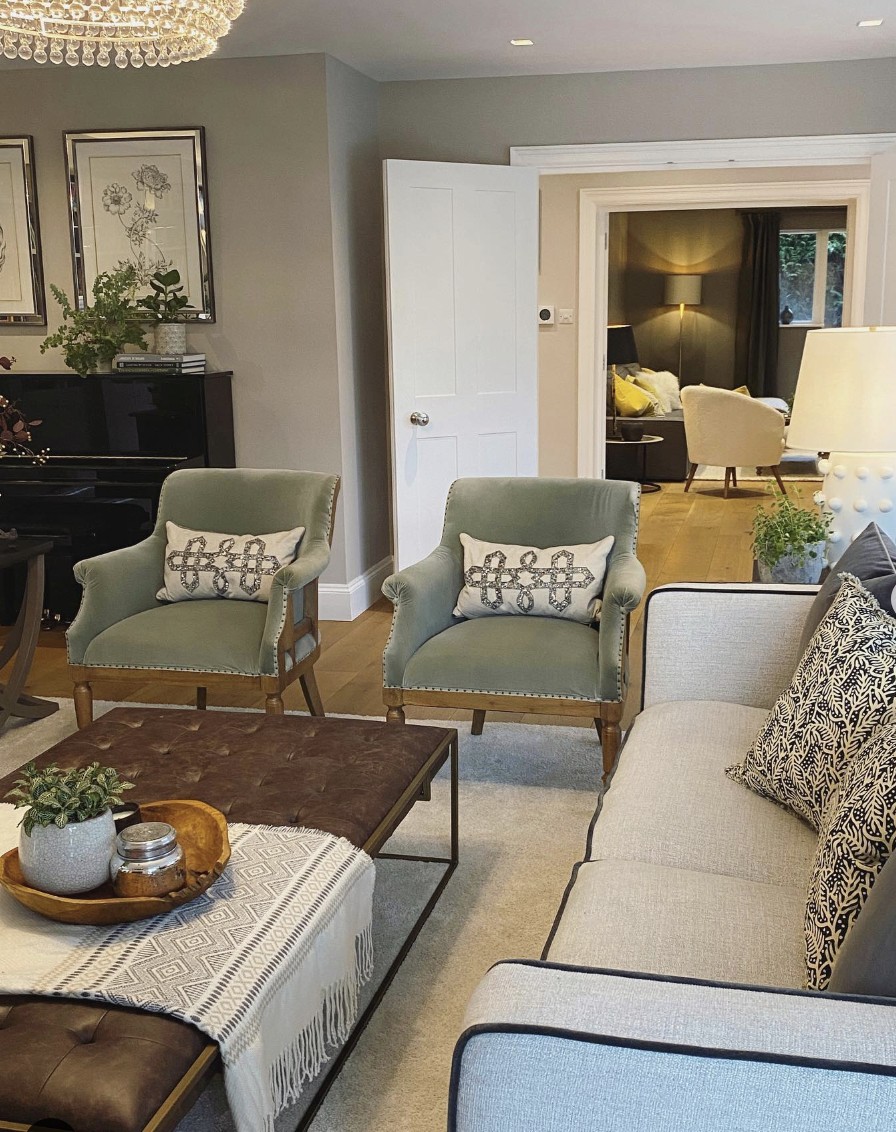We’ve all encountered those peculiar nooks, crannies, and oddly shaped rooms that seem impossible to work with. But what if I told you that your ‘awkward’ living room could be your home’s most significant asset? As we often find ourselves at a loss for how to tackle these unconventional spaces, it’s easy to overlook the potential they hold. However, by embracing our homes’ unique quirks and imperfections, we can transform even the most awkward of living rooms into a sanctuary that truly reflects our personalities.
As I delve into my world of interior design, I’ve discovered 15 Awkward Living Room Layout Ideas that not only celebrate the unconventional but also showcase the beauty in imperfection. Through creative problem-solving and a willingness to think outside the box, these designs will leave you wondering why you ever saw them as challenges in the first place.
So, grab a cozy drink, sit back in your favorite (awkwardly placed) chair, and join me on this journey into the realm of the beautifully unconventional. Here’s to loving the quirks of our homes!
Use Furniture Or Screens To Divide The Space Into Distinct Areas
A well-designed sectional sofa can be a game-changer for small living rooms, allowing you to create distinct zones for socializing, watching TV, or relaxing. The L-shape configuration of sectionals provides a natural boundary, effectively separating different areas within the space and fostering a sense of intimacy. This versatility is particularly valuable in smaller rooms where multifunctionality is crucial. For instance, you can place a sectional against a wall to define a cozy conversation area or use it to create a TV-watching zone.
Consider Angling Some Furniture
While incorporating angled furniture pieces can be an effective way to distract from any imperfections or awkward corners within a room, their strategic placement can actually redirect one’s attention towards a particular area or feature. This thoughtful arrangement has the ability to create a sense of intentionality and curation, making spaces feel more deliberate and well-designed.
Use Rugs To Define Separate Areas In The Living Room
When dealing with unconventional living room layouts, rugs can be a game-changer. While they undoubtedly add a touch of style to the space, their impact goes beyond mere aesthetics. Rugs play a crucial role in defining areas within the room, which is particularly important when the layout is non-traditional or serves multiple purposes. By carefully selecting and positioning rugs, you can create distinct zones that guide how users interact with the space. This approach can be especially effective in rooms where traditional layouts don’t apply. For instance, a long, narrow living room may benefit from a large central rug defining the seating area, while a smaller, contrasting rug near a window can create a cozy reading nook. With strategic rug placement, even the most awkward spaces can feel intentional and curated.
Using Mirrors Can Make An Awkward Room Seem Larger And Brighter.
Mirrors possess a unique property that enables them to visually enlarge a space. By reflecting light and various elements within the room, they create an optical illusion of depth, making areas appear larger than their actual size. This is particularly advantageous in rooms with limited or uniquely situated windows, as mirrors can effectively double the amount of natural light entering the space.
Use Art To Draw Attention To Or Away From Certain Areas Of The Room
In many cases, creating harmony in an awkward living room is not just about highlighting individual elements, but rather achieving a sense of equilibrium through artful balance. This involves strategically placing pieces of varying sizes to offset visual weight and strike a harmonious tone. For instance, a larger artwork can effectively counterbalance the presence of a bulky sofa on the opposite side of the room, while a series of smaller prints can be used to fill in sparse areas without overwhelming them.
Consider Flexible Seating Options
In contrast to traditional living rooms, where furniture arrangements can often feel rigid and inflexible, irregularly shaped spaces can benefit from adaptable seating solutions. By embracing flexible configurations, homeowners can create areas that seamlessly shift between cozy reading nooks and bustling social hubs, effortlessly responding to the mood and atmosphere of each gathering. With this approach, every occasion becomes an opportunity to reimagine and revitalize the space, rather than feeling confined by predetermined layouts.
Incorporate Mix Of Large And Small Pieces
Incorporating oversized furniture pieces can be surprisingly effective in creating harmony in a challenging space. While the initial instinct might be to opt for smaller items, a room filled with only diminutive pieces can end up feeling cluttered or lacking an anchor. By contrast, introducing one or two statement pieces, such as a bold coffee table or a show-stopping sofa, provides a grounding element that draws the eye and offers a counterbalance to more miniature furniture or decorative elements.When selecting oversized items, it’s essential to consider multifunctional pieces that can serve multiple purposes or change shape. Modular sofas, nesting tables, and ottomans with storage are excellent examples of such versatile furniture. These adaptable options grant flexibility in arranging your space and allow you to adapt to different needs and occasions.This concept was beautifully demonstrated by a friend who lived in a compact apartment with an L-shaped living room. Traditional furniture placement didn’t work for her unique space, so she instead chose to embrace the layout’s quirks. Using a convertible sofa that could be reshaped into various configurations, she adjusted its form depending on the occasion. When hosting guests, it transformed into an L-shaped sofa to fit the room’s shape, and during movie nights, it became a cozy bed for lounging. This adaptable approach ensured her space always felt inviting and intentional.
Utilize Vertical Space For Storage Or Decoration
In many modern homes and apartments, vertical space is often overlooked as a valuable asset. However, tapping into this area not only maximizes storage options but also creates a sense of spaciousness and grandeur by drawing the eye upwards. This is particularly useful in rooms where horizontal space is limited or awkward, making it crucial to leverage the vertical dimension to balance the room and create a sense of completeness.
As an expert tip, utilizing wall-mounted elements, tall furniture pieces, and ceiling decor can help achieve this. For instance, a neighbor with a living room featuring exceptionally high ceilings but limited square footage cleverly utilized the available vertical space by installing tall bookshelves and hanging plants from the ceiling. This not only made use of the available vertical space but also added warmth and personality to the room.
By mounting his TV on the wall and using wall-mounted cabinets, he freed up floor space, making the room feel larger than it was. This example illustrates how cleverly utilizing vertical space can transform a room’s atmosphere and functionality.
Benches Can Be A Versatile Furniture In Fill In Empty Corners
In many homes, awkward living room layouts are a common challenge. Fortunately, benches offer a clever solution to this problem. Their unique shape allows them to fit seamlessly into tight spaces, providing not only seating but also a design element that adds intentional style to the room. When chosen thoughtfully, a bench can harmonize with the space’s aesthetic, serving as both a functional piece of furniture and a work of art that brings the room together.
Make Sure To Have Layered Lighting
When it comes to accentuating your living room’s best features, accent lighting is a game-changer. By highlighting specific areas or focal points, you can distract from any awkwardness and showcase the space’s strengths. This type of lighting can be achieved through track lights, picture lights, or even whimsical string lights, all of which are designed to draw attention to unique decor pieces, striking artwork, or architectural features that add visual interest to the room.
Do Not Overcrowd The Space
When it comes to designing an interior space, the issue of overcrowding is often overlooked. However, not only does it make a room feel cramped and claustrophobic, but it also inadvertently highlights its imperfections. Conversely, creating a sense of ‘breathing room’ between furniture and decor can have a profound impact on the overall ambiance. By doing so, one can successfully create an illusion of openness, making the space feel larger and more welcoming to those who inhabit it.
Play With The Colors
While awkward living room layouts can be frustrating to work with, a clever use of color can be a game-changer in creating the perfect atmosphere. Lighter shades such as soft whites, pale blues, or muted yellows can create an illusion of spaciousness, making a cramped room feel more airy and inviting. Conversely, deeper hues like navy, forest green, or rich burgundy can bring together vast, open spaces, drawing attention to the most intimate areas and creating a cozy ambiance. By leveraging color in this way, even the most challenging layouts can be transformed into a comfortable and aesthetically pleasing space.
Opt For Slim Furniture
The game-changer of slim-profile furniture lies in its capacity to liberate floor space, unlike its bulky counterparts that can overwhelm a room and make it feel cramped. As a result, this type of furniture proves particularly valuable in confined or compact areas, where the preservation of even the smallest clearance is crucial. In such settings, slim furniture’s ability to provide functionality without dominating the space makes it an indispensable asset.
Add Lamps Or Plants In The Awkward Corners
Nature lovers rejoice! For those seeking a touch of the great outdoors within their four walls, plants are an ideal solution. Towering potted greenery like fiddle leaf figs and monsteras can effortlessly fill vacant spaces, injecting life and vitality into the room. Beyond mere aesthetics, these verdant wonders also contribute to enhanced indoor air quality. What’s more, many plant species thrive in low-light environments, making them perfect for those hard-to-reach areas of your home that receive limited natural light.
Make Cozy Corner Nooks
Intimate spaces within our homes, often overlooked yet oh so cherished, are the corner nooks that bring us comfort and warmth. These secluded areas, whether transformed into cozy reading sanctuaries or verdant plant havens, have a unique ability to foster a sense of closeness and togetherness. It’s as if these little gems have been designed specifically for quiet moments with ourselves or cherished times spent with loved ones, making them an integral part of our living spaces.
FAQS
How to arrange furniture in an awkward living room with a fireplace?
As you design your living room with a fireplace, begin by recognizing the chimney as the central anchor point. This serves as the starting point for arranging furniture in a harmonious layout. Position your main seating area, such as a sofa or chairs, in a way that allows those seated to appreciate both the warmth and ambiance of the fire, as well as the overall aesthetic of the room. If space constraints are a concern, consider placing smaller pieces perpendicular to the main seating arrangement, carefully balancing the need for flow with the need for functionality. Don’t overlook ensuring a safe distance between furniture and fireplace, nor neglecting to maintain clear traffic paths throughout the space.
Where should a couch be placed in a living room with a fireplace?
In home design, fireplaces are often the room’s centerpiece, and placing the couch accordingly can greatly enhance the overall ambiance. For optimal visual appeal, position the sofa directly in front of the fireplace, or if the space permits, place it slightly off-center to accommodate other seating arrangements. If the fireplace is situated in a corner, an angled couch placement can create a warm and inviting setting. However, it’s essential to maintain a comfortable distance between the sofa and the fireplace for both safety and warmth, ensuring the heat doesn’t become overwhelming.
How do you style an awkwardly shaped living room?
When faced with an awkwardly shaped living room, creativity and practicality must harmonize to create a stylish space. Start by recognizing any natural focal points beyond architectural ones – windows, built-in features, or perhaps a statement piece of art. Next, opt for flexible, multifunctional furniture that can adapt to the room’s unique shape. Embrace asymmetry as a way to balance the space and define distinct zones with area rugs. Strategically placed lighting can also highlight the room’s best features. By embracing the room’s quirks, you’ll turn them into standout design elements. Don’t be afraid to think outside the box and get creative – after all, an awkwardly shaped living room is the perfect excuse to showcase your personal style.

